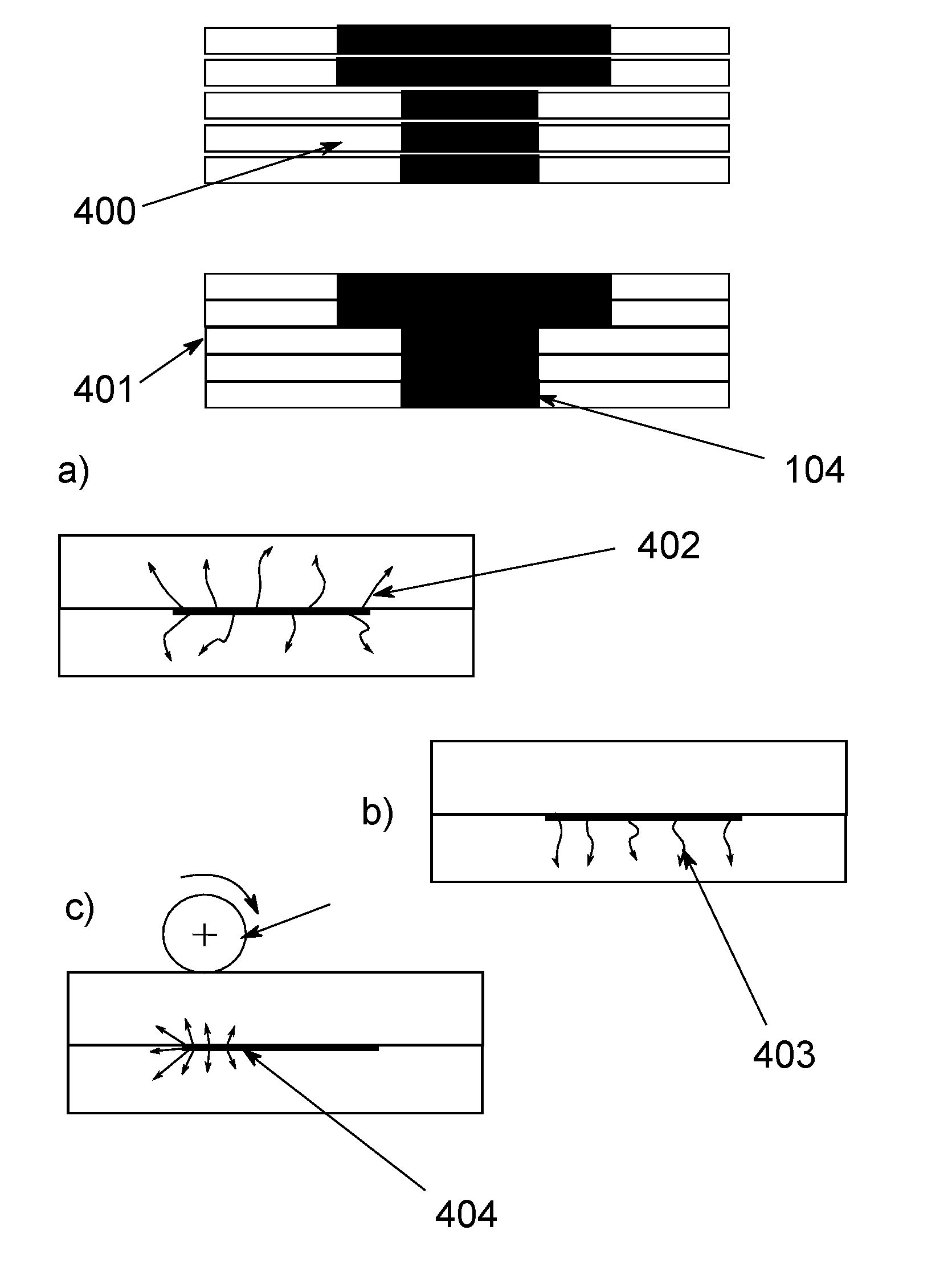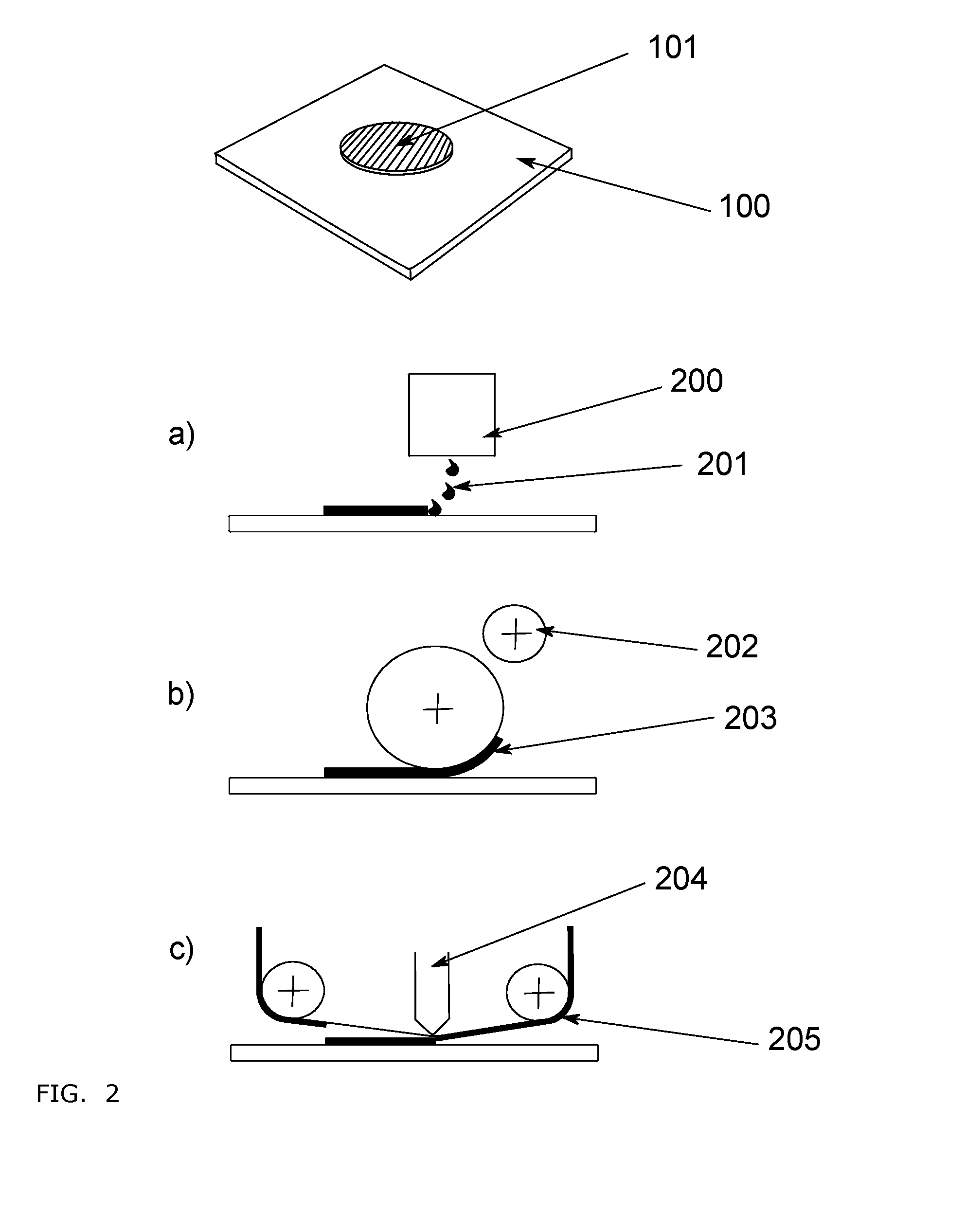Device, special paper, and method for producing shaped articles
a technology of shaped objects and special paper, which is applied in the field of devices for producing 3d objects, can solve the problems of high investment in technology, difficult use outside of the industrial environment, and high cost of 3d printing special machines
- Summary
- Abstract
- Description
- Claims
- Application Information
AI Technical Summary
Benefits of technology
Problems solved by technology
Method used
Image
Examples
exemplary embodiment 1
Special Paper—Laser Printer—Home Oven
[0096]In this embodiment of the invention, the focus is on home application. The embodiment facilitates the following scenario. A user is particularly interested in a 3D object on the Internet. He buys the special paper that is compatible with his 2D printer. Special software then allows him to convert a 3D format into individual 2D images. The operation is also accompanied by the program, and software assistants are provided that control the sheet sequence. The user can now print out his stack. After careful layering, the entire stack is placed in the oven. After a cooling phase, the user flushes his component out of the stack.
[0097]This technology enables the user to produce a 3D component at home in less than 1 day. He does not have to make any investment or possess any special technical skills.
[0098]The paper composition is crucial to the process steps. In this application example, cellulose-based paper is used. The fibers are short and have ...
exemplary embodiment 2
Ceramic Special Paper—Ink-Jet Printer—Industrial Oven
[0109]The second example describes an industrial application of the aforementioned principle. The further benefits of the method are used here. An investment must be made prior to use.
[0110]This time, a ceramic film in the green state is used as paper. It is essentially made of a silicate ceramic compound. This compound is mixed with PVA and water and rolled out into a paper / film. A drying process the follows, in which all evaporable liquid is removed. The drying process must take place below the glass transition point of the PVA and in a gentle manner to avoid cracking. The temperatures must be kept below 100° C. The paper may subsequently be plasticized between two heated rollers, due to the action of heat, and calibrated for good parallelism and layer thickness control.
[0111]This paper may be further processed into sheets or used as a roll (600). After drying, it is elastically pliable, due to a thickness of less than 100 μm, a...
PUM
| Property | Measurement | Unit |
|---|---|---|
| Temperature | aaaaa | aaaaa |
| Pressure | aaaaa | aaaaa |
| Viscosity | aaaaa | aaaaa |
Abstract
Description
Claims
Application Information
 Login to View More
Login to View More - R&D
- Intellectual Property
- Life Sciences
- Materials
- Tech Scout
- Unparalleled Data Quality
- Higher Quality Content
- 60% Fewer Hallucinations
Browse by: Latest US Patents, China's latest patents, Technical Efficacy Thesaurus, Application Domain, Technology Topic, Popular Technical Reports.
© 2025 PatSnap. All rights reserved.Legal|Privacy policy|Modern Slavery Act Transparency Statement|Sitemap|About US| Contact US: help@patsnap.com



